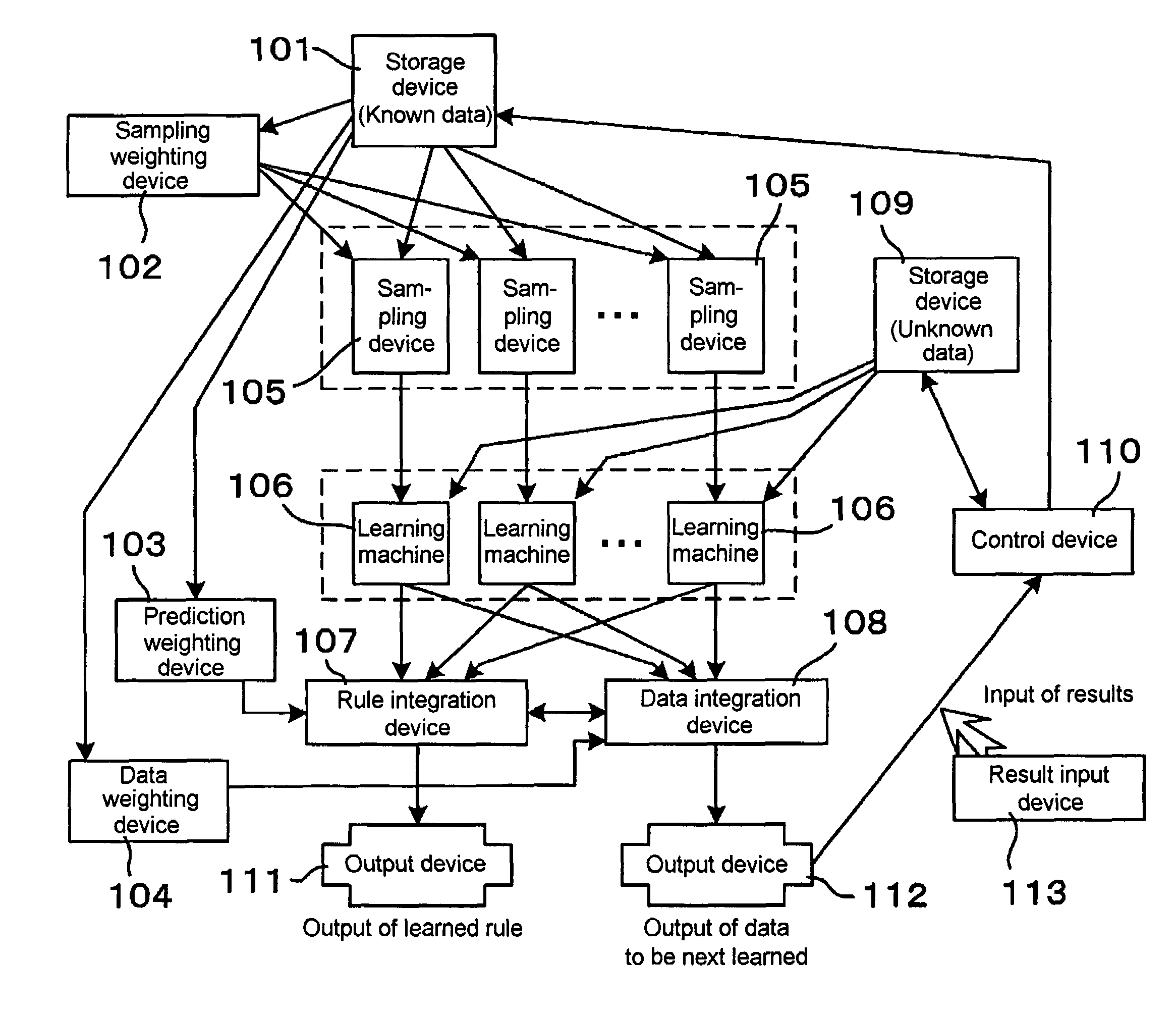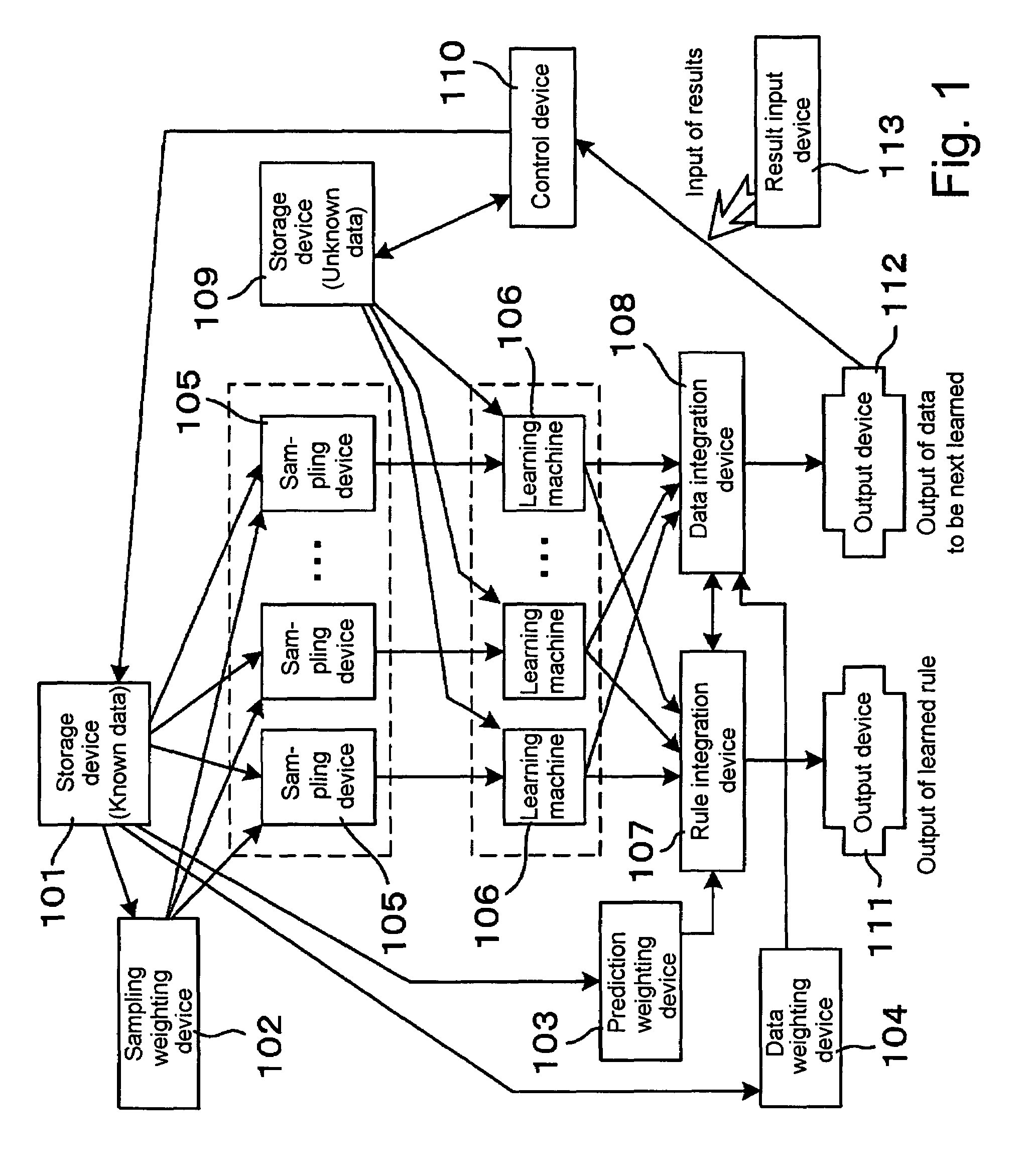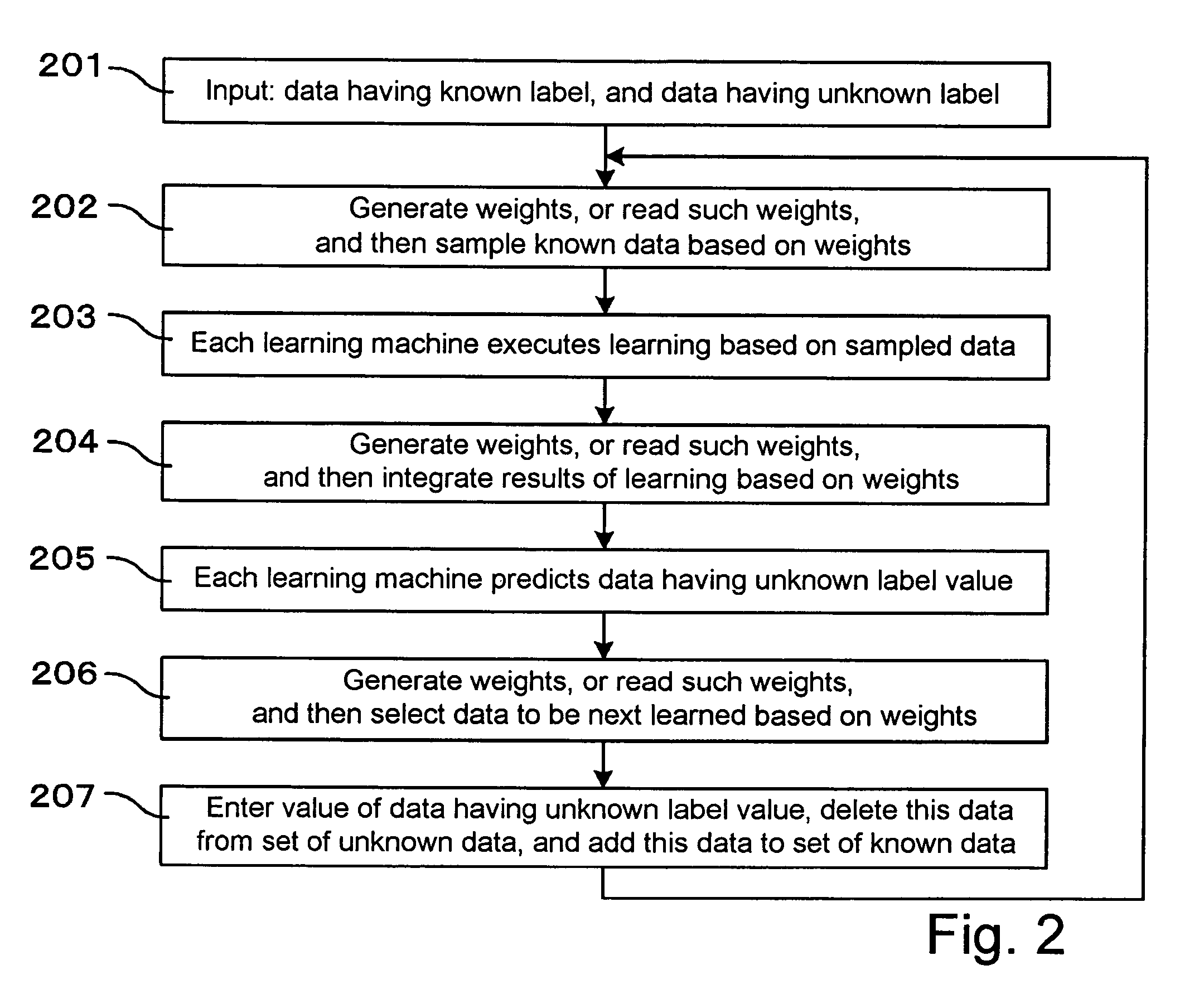Active learning method and system
a learning system and active learning technology, applied in the field of active learning methods and active learning systems, can solve the problems of large number of similar data delivered, inability to control the intent of users, and inability to obtain correct answers, so as to improve mining accuracy, improve the covering rate, and increase the weight
- Summary
- Abstract
- Description
- Claims
- Application Information
AI Technical Summary
Benefits of technology
Problems solved by technology
Method used
Image
Examples
first embodiment
[0062]An active learning system according to a first embodiment of the present invention illustrated in FIG. 1 comprises storage device 101 for storing data having known label values (i.e., known data); sampling weighting device 102 for generating data for weighting known data within storage device 101 when they are sampled; prediction weighting device 103 for generating data for performing weighting when a prediction is made; data weighting device 104 for generating data for performing weighting when data to be next learned is selected; a plurality of learning machines 106; a plurality of sampling devices 105 for sampling data from storage device 101 to supply the data to corresponding learning machines 106; rule integration device 107 for integrating the results of learning from the plurality of learning machines 106; output device 111 connected to rule integration device 107; data integration device 108 for calculating data to be next learned based on the results in the plurality...
second embodiment
[0080]Next, a second embodiment of the present invention will be described with reference to FIG. 4. An active learning system illustrated in FIG. 4 is similar to the active learning system of the first embodiment, but differs from that of the first embodiment in that it is not provided with the prediction weighting device and data weighting device. With the omission of the prediction weighting device and data weighting device, rule integration device 107 uniformly handles results delivered from learning machines 106, so that a final rule is delivered by such means as a decision by majority. Specifically, rule integration device 107 calculates a frequency on a class-by-class basis, when a label value takes a discrete value, or on a section-by-section basis, when a label value takes a continuous value, for the result delivered from each learning machine 106, and delivers the one having the largest value as a predicted value.
[0081]Also, data integration device 108 uniformly handles th...
third embodiment
[0083]Next, a third embodiment of the present invention will be described with reference to FIG. 6. An active learning system illustrated in FIG. 6 is similar to the active learning system of the first embodiment, but differs from that of the first embodiment in that it is not provided with the sampling weighting device and data weighting device. With the omission of the sampling weighting device and data weighting device, each sampling device 105 uniformly handles all known data, and performs random sampling. Also, data integration device 108 uniformly handles the output results, and delivers the data which is most difficult to determine, as is the case with the second embodiment.
[0084]FIG. 7 illustrates advantageous effects of the active learning system of the third embodiment. In the figure, line 309 indicates an ROC curve which represents a learning accuracy of this active learning system. Since the conventional active learning method uniformly handles learning results when the ...
PUM
 Login to View More
Login to View More Abstract
Description
Claims
Application Information
 Login to View More
Login to View More - R&D
- Intellectual Property
- Life Sciences
- Materials
- Tech Scout
- Unparalleled Data Quality
- Higher Quality Content
- 60% Fewer Hallucinations
Browse by: Latest US Patents, China's latest patents, Technical Efficacy Thesaurus, Application Domain, Technology Topic, Popular Technical Reports.
© 2025 PatSnap. All rights reserved.Legal|Privacy policy|Modern Slavery Act Transparency Statement|Sitemap|About US| Contact US: help@patsnap.com



